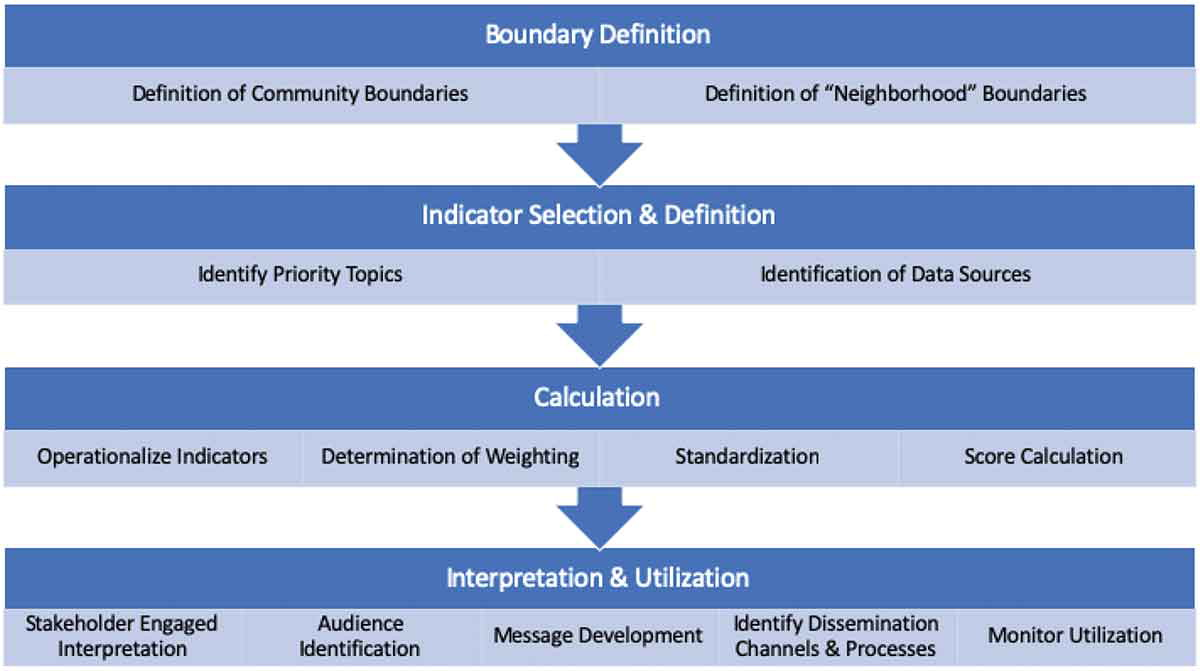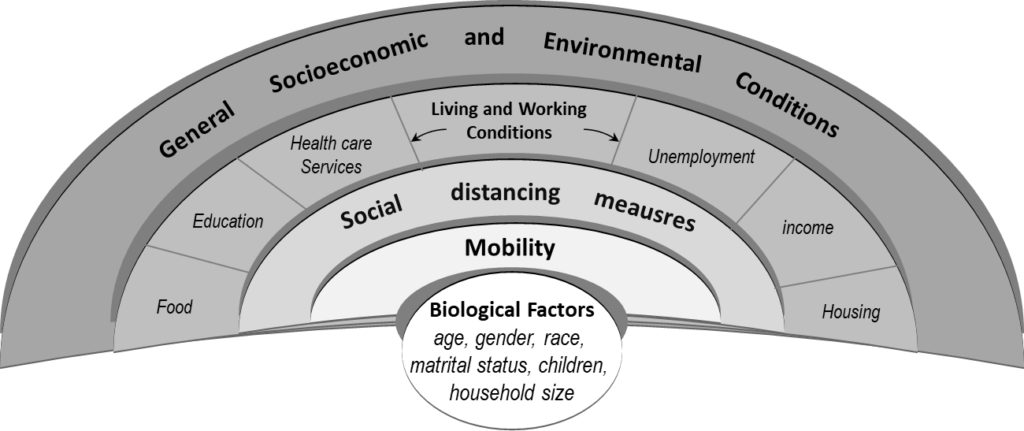City Know-hows

Target audience
Regional and local-level urban planners. Health impact assessment practitioners.
The problem
The use of health impact assessments is rapidly growing and can benefit from the integration of a wide variety of available data sources; however, integration of several different sources of data can be a challenge.
There are so many factors that determine the health of neighbourhoods that:
What we did and why
Our work presents a method of integrating several different sources of health impact data to create a single score of potential health impacts of an area within a given community relative to other areas within that community.
We first put different data sources into common units of measure using a standardization technique. Next, by taking into consideration the strength of available evidence, input from community stakeholders, and other sources of data, we individually weighted the diverse range of variables related to documented sources of health impacts, both positive and negative. We then combined these weighted quantities of impact into a combined health impact score, which provides a relative score (compared to other areas within the study area) for a given location.
Our study’s contribution
This study adds a tool that decision makers, planners, and health impact assessment practitioners can use to better understand the drivers that are impacting the health of their neighbourhoods.
The scores allow identification of what factors in a neighbourhood are most relevant in driving health impacts in a specific locality. This can help decision makers set priorities for which issues to address.
Impacts for city policy and practice
Practitioners seeking to better understand the sources of potential health impacts, either when using a health impact assessment or some other approach to integrate multiple sources of data into the decision making or planning process, could benefit from using this method/tool. This tool helps to further integrate health into broader decision-making processes, such as health in all policies.
The tool can be used to inform plans for healthy development, health impact assessments, and can provide a health-oriented evidence-base for decision makers to consider when deliberating and setting priorities.
Further information
https://sophia.wildapricot.org/https://www.pewtrusts.org/en/projects/health-impact-project
Authors: John D. Prochaska (@DrJohnProchaska), Robert N. Buschmann and Daniel Jupiter
Full research article:
Related posts

Emergencies can become transformative experiences for cities: an opportunity to rethink, replan and rebuild, and to push for changes that can make them more healthy, sustainable, equitable and resilient. We interviewed 12 cities on their practical experiences with local emergencies and disasters, identifying common challenges and lessons learned for the future.

The world is currently responding to the climate crisis and the nature crisis as if they were separate challenges. This is a dangerous mistake. The are leading to dire impacts for our health

The psychological impact of social distancing order during the COVID-19 pandemic can be determined by combining the effects of both individual and community capacities. This study supports the need to improve the physical environment to implement more sustainable health policies in different communities and cities across the world.